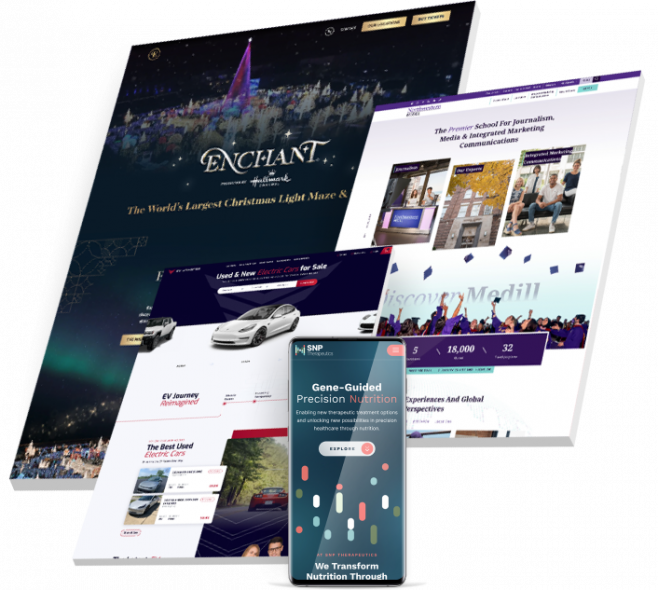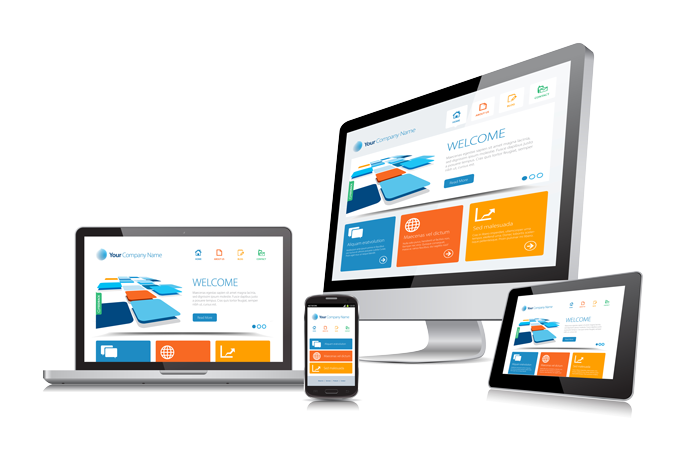How to Pick the Right Tools for Your Website Design Projects
How to Pick the Right Tools for Your Website Design Projects
Blog Article
Secret Techniques for Applying User-Centric Web Site Style to Boost Involvement
When thinking about the implementation of user-centric website design, specific strategies contribute in boosting involvement. Thorough research into user needs and preferences forms the structure, directing the creation of individual personalities to educate style selections. Intuitive navigation and responsive user interfaces are crucial, making certain convenience of access across all tools. Meanwhile, personalizing web content enhances customer complete satisfaction, and robust availability functions expand reach. These strategies collectively cultivate an even more meaningful online experience. Just how do these aspects come together effectively, and what practical steps can be taken to guarantee their effective combination?
Comprehending Customer Demands
Understanding customer needs is a basic action in the process of user-centric internet site design. This technique guarantees that the website aligns with the assumptions and requirements of its target audience, eventually bring about enhanced customer complete satisfaction and engagement. The initial stage entails carrying out detailed research study to gather understandings into customer behaviors, preferences, and pain points. Techniques such as surveys, interviews, and individual screening can give valuable qualitative and measurable information about just how customers interact with the internet site.
Evaluating this data enables designers to create comprehensive customer characters that stand for the various segments of the target audience. These personalities help educate style choices by highlighting details individual objectives and challenges, directing the development of features that resolve these demands efficiently. Comprehending the context in which customers operate-- such as their atmosphere, tool choices, and time constraints-- can even more improve the style approach.
Compassion plays an essential function in this process, enabling designers to see the website from the user's perspective. By prioritizing customer demands, the layout process comes to be a lot more focused, avoiding the incorporation of unneeded elements that might clutter the individual experience. Ultimately, a deep understanding of user requirements is important in crafting an internet site that is both functional and purposeful.
Designing Instinctive Navigating
Having actually developed a comprehensive understanding of individual needs, the following action in user-centric website style entails developing instinctive navigation. Effective navigating is fundamental to individual contentment, influencing exactly how conveniently individuals can discover info and complete jobs. To accomplish intuitive navigation, developers should prioritize simpleness and clearness, ensuring that the navigation framework is rational and consistent throughout the site.
Organizing material right into a clear power structure is crucial. Website Design. Making use of familiar labels and icons can direct customers effortlessly, reducing cognitive load and boosting the overall user experience. A well-designed navigation bar must be plainly positioned, allowing users to identify their current place and quickly check out various other sections of the site
It is also crucial to integrate interactive aspects such as breadcrumbs and search performances to aid individuals in navigating complicated sites. These attributes provide additional paths and enhance the availability of material, accommodating various customer preferences and actions.
Evaluating navigating with real customers is important to identify prospective pain factors and ensure capability straightens with customer assumptions. Routine feedback loopholes and iterative enhancements can aid maintain a reliable navigating system that adapts to evolving customer requirements, ultimately enhancing involvement and contentment.
Producing Responsive User Interfaces
Invariably, producing responsive user interfaces is a critical facet of modern-day internet layout, ensuring that web sites are useful and easily accessible throughout a wide variety of devices and screen sizes (Website Design). This adaptability is critical in a landscape where individuals access content by means of smart devices, desktop computers, laptops, and tablets, each with differing resolutions and orientations. The key objective of responsive layout is to enhance individual experience by keeping optimum readability and usability, no matter the device used
To accomplish this, internet developers use adaptable grid layouts, fluid pictures, and CSS media inquiries. Adaptable grids enable internet site components to resize proportionally, while fluid pictures guarantee visuals range appropriately without losing high quality. Media questions play a vital duty by using different designs based upon the gadget's attributes, such as elevation, positioning, and size, thus customizing the design to the individual's screen.
Moreover, responsive interfaces add to enhanced search engine optimization (SEARCH ENGINE OPTIMIZATION) by supplying a smooth individual experience, which consequently can minimize bounce rates and increase website engagement. In summary, embracing responsive design is not simply a technical factor to consider but check my site a necessary method for fostering a user-centric internet setting that meets the demands of a varied target visit the website market.

Personalizing Content Experience
Personalizing material experience is an important part of user-centric website design that entails tailoring web content to fulfill the one-of-a-kind preferences and actions of specific customers. This approach not only enhances customer satisfaction but likewise fosters deeper involvement, as visitors are much more likely to communicate with content that reverberates with their interests and requirements. By leveraging data analytics and user comments, organizations can identify patterns and patterns that inform the personalization of internet material.
Incorporating personalization approaches can range from basic adjustments, such as recommending products based upon browsing background, to much more advanced methods like vibrant content that adapts in real-time to a customer's communications. As an example, individualized landing pages can substantially boost conversion rates by supplying customers with pertinent info and offers that align with their previous activities and choices.
In addition, using expert system and artificial intelligence can additionally refine material personalization by continually discovering from customer habits and adjusting to emerging trends. This not only enhances the customer's journey yet additionally constructs brand name commitment, as customers really feel recognized and valued. Eventually, personalizing the content experience is a crucial strategy for companies aiming to develop a much more appealing and purposeful communication with their target market.
Enhancing Ease Of Access Attributes
Enhancing accessibility features is a fundamental facet of user-centric internet site layout, ensuring that digital content is usable by every person, consisting of people with handicaps. This approach not just adheres to legal requirements such as the Americans with Disabilities Act (ADA) and the Web Material Availability Standards (WCAG) however also considerably widens an internet site's target market reach. By integrating features like keyboard navigating, screen visitor compatibility, and different text for images, websites become extra comprehensive, offering a smooth experience for customers with visual, acoustic, or motor problems.
Integrating responsive layout components is critical, helping with access on various tools and screen more helpful hints sizes, thereby suiting individuals with various choices and requirements. Comparison ratios and message size changes can improve readability for individuals with aesthetic obstacles. Offering succinct and clear material structure, such as lists and headings, aids comprehension and navigating, particularly for customers with cognitive impairments.
Regular availability audits should be conducted to determine and fix prospective obstacles, ensuring continued conformity and use. By prioritizing availability, companies not only foster inclusivity but likewise enhance general customer interaction and satisfaction, inevitably driving higher conversion rates and enhancing brand name loyalty.

Verdict
Incorporating user-centric design techniques substantially boosts web site interaction by focusing on the demands and choices of users. Complete study facilitates the creation of user personalities, directing targeted style decisions.
Extensive research study into individual requirements and preferences forms the foundation, guiding the creation of user personas to inform design options. Methods such as surveys, interviews, and customer screening can give useful qualitative and measurable information regarding exactly how individuals connect with the internet site.
By prioritizing user demands, the design procedure comes to be extra focused, preventing the addition of unnecessary components that might clutter the customer experience. Efficient navigation is basic to customer contentment, affecting how conveniently individuals can find details and total tasks. The usage of familiar tags and icons can guide individuals effortlessly, reducing cognitive tons and boosting the total individual experience.
Report this page